Tag: PEEP

Higher vs. Lower PEEP in ARDS Patients
In our meta-analysis of RCTs, higher positive end-expiratory pressure (PEEP), compared with lower PEEP, was not associated with mortality in patients without acute respiratory distress syndrome (ARDS) receiving invasive mechanical... read more
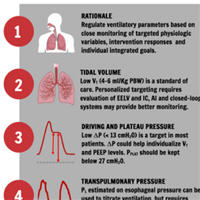
Personalized Mechanical Ventilation in ARDS
A personalized mechanical ventilation approach for patients with adult respiratory distress syndrome (ARDS) based on lung physiology and morphology, ARDS etiology, lung imaging, and biological phenotypes may improve ventilation... read more
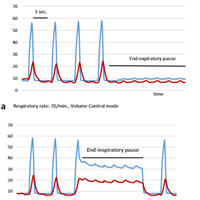
When Could Airway Plateau Pressure is Acceptable in ARDS Patients?
Limitation of plateau pressure (Pplateau) is critical for pro-tection from ventilator-induced lung injury in patients with acute respiratory distress syndrome (ARDS). Limiting to a 30 cmH2O threshold is a widely accepted... read more
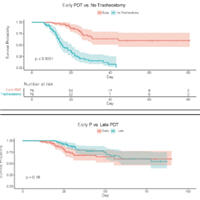
Percutaneous Dilational Tracheostomy for COVID-19 Patients Requiring Mechanical Ventilation
Patients with COVID-19 who survive the early days of MV experience severe and prolonged respiratory failure. An early modified percutaneous dilational tracheostomy (PDT) was safe for patients and healthcare providers and... read more
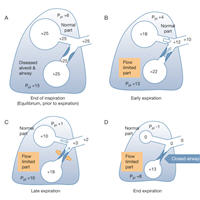
Expiratory Flow Limitation During Mechanical Ventilation
Expiratory flow limitation (EFL) is present when the flow cannot rise despite an increase in the expiratory driving pressure. The mechanisms of EFL are debated but are believed to be related to the collapsibility of small... read more

90 Day Outcomes of COVID-19 Patients in European ICUs
This communication delineates outcomes in COVID-19 patients in the context of ARDS severity, ventilatory management, and variables associated with mortality on a 90-day follow-up for subgroups of patients after ICU admission.... read more

Individualized vs. Fixed Positive End-expiratory Pressure for Intraoperative Mechanical Ventilation in Obese Patients
This secondary analysis of obese patients undergoing laparoscopic surgery found better oxygenation, lower driving pressures, and redistribution of ventilation toward dependent lung areas measured by electrical impedance tomography... read more
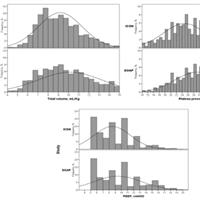
Temporal Changes in the Epidemiology, Management, and Outcome from ARDS
The frequency of and outcome from ARDS remained relatively stable between 2002 and 2012. Plateau pressure > 29 cmH2O and driving pressure > 14 cmH2O on the first day of mechanical ventilation but not tidal volume > 8... read more

COVID-19 and VILI: Mechanical Power Measurement
The COVID-19 pandemic has increased the need for a bedside tool for lung mechanics assessment and ventilator-induced lung injury (VILI) monitoring. Mechanical power is a unifying concept including all the components which... read more

Myorelaxants in ARDS patients
Neuromuscular blocking agents (NMBAs) inhibit patient-initiated active breath and the risk of high tidal volumes and consequent high transpulmonary pressure swings, and minimize patient/ ventilator asynchrony in acute respiratory... read more
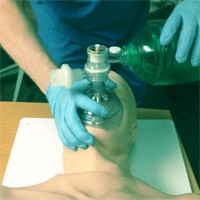
Airway closure, more harmful than atelectasis in intensive care?
Since the mid-1980s, atelectasis has been demonstrated during anesthesia in lung healthy subjects and in intensive care patients suffering from acute respiratory failure and requiring ventilator support. In the latter... read more
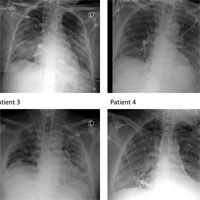
Increased Dead Space Ventilation and Refractory Hypercapnia in Patients with COVID-19
We speculate that thromboinflammation with pulmonary microvasculature occlusion leads to a sudden increase in dead space and shunt resulting in severe hypercapnia and hypoxemia in coronavirus disease 2019 patients. Early... read more
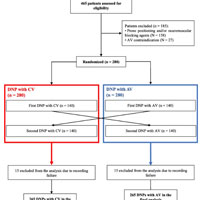
Automated vs. Conventional Ventilation in the ICU
Automated ventilation (AV) appears to reduce the incidence and severity of blood oxygen desaturation during daily nursing procedures (DNPs) in comparison to Conventional Ventilation (CV). Of the 265 included patients,... read more
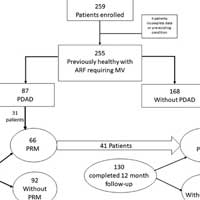
Development of Persistent Respiratory Morbidity in Previously Healthy Children After ARF
Persistent respiratory morbidity develops in up to potentially 44% of previously healthy children less than or equal to 24 months old at follow-up after acute respiratory failure (ARF) requiring mechanical ventilation. This... read more




